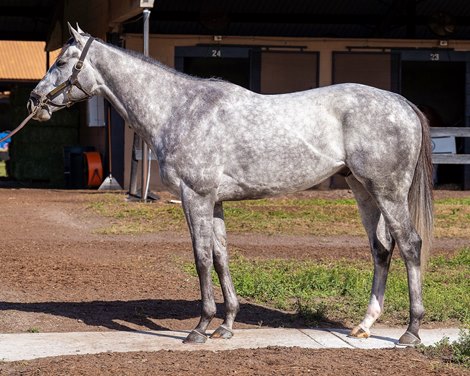Barre Vs. Pilates: Which Sculpt Workout Is The Better Burn?

Torn between using your ClassPass credits on your favorite upbeat barre class or that shake-worthy Pilates sesh? While the modalities have a lot in common (they both draw influence from yoga and dance and even share some of their movements, for example), depending on your goals, you might actually want to do one over the other.
Keep in mind that it’s most important to do what you like the most. Since these exercises are similar, they share a lot of benefits like increased flexibility and mobility and better posture. The best exercise is the kind that you’ll do consistently because you enjoy it. And also: There’s room for both barre and Pilates in your workout repertoire. “I wouldn’t pick one over the other,” says Kathy Bambace Salvo, director of Evolve Yoga, Pilates & Barre Programming at Chelsea Piers Fitness. “If you can do both, I would.”
But, if you are chasing a specific goal—full-body toning, a stronger core, maximum burn—here’s how the two stack up against each other.
Meet the experts: Rachelle Reed, PhD, is an exercise scientist and Pure Barre instructor based in Athens, GA. Kathy Bambace Salvo, is a certified yoga, barre, and Pilates instructor and the director of Evolve Yoga, Pilates & Barre at Chelsea Piers Fitness.
What’s the difference between barre and Pilates?
Barre and Pilates are both low-impact workouts, suitable for most fitness levels, and utilize small, precise movements to fatigue your muscles. “They really are so similar,” says Bambace Salvo. And, their similarities aren’t a big surprise. “Lotte Berk—the inventor of barre—did a lot of Pilates,” says Bambace Salvo. In fact, the core section of your barre class? That’s Pilates.
One big difference: The music. A barre class is typically taught around its playlist, says Rachelle Reed, PhD, an exercise scientist and Pure Barre instructor of over ten years. You’re meant to move with the beat, and this might even help the class fly by just that much quicker, according to research. Exercising to music both makes the workout feel easier and boosts muscle activation, per a 2021 review in the Journal of Functional Morphology and Kinesiology. Meanwhile, Pilates, similar to yoga, is more focused on following the breath, also allowing it to promote better body awareness, says Bambace Salvo.
You’ll also find that where a Pilates class mostly works your core, barre is a full-body workout that gives time to your legs, glutes, core, and arms equally—on top of some cardio, says Reed. Plus, the equipment is going to look pretty different. While Pilates can be done without it, the modality is known for its reformer: That big, sliding contraption with springs that add resistance and challenge to the workout. Barre is known for its ballerina bar where you’ll do pliés until you really feel the burn.
Which is better for core strength?
If building core strength is your goal, Pilates is the choice for you, say both experts. After all, the modality is pretty much entirely focused on that part of the body. There are so many benefits to this, says Bambace Salvo. Pilates really targets all the muscles in your core, improving flexibility, posture, and even breathing. “You walk out of that class feeling taller,” she says.
Because Pilates is so effective at strengthening your core, it can even be used to help relieve lower back pain (which can in part be caused by a weak core), per a 2023 review in Healthcare.
Which offers more total-body toning?
Both barre and Pilates fall under the category of “sculpt” classes—but barre might be better at sculpting, say our experts. Barre tends to use high reps and low weight, which is a great way to build up endurance and get light muscle definition, says Bambace Salvo. Plus, barre is full-body—and mainly targets the areas people are looking to define—on top of having some cardio, which is a perfect combo to get toned.
As for building strength and muscle growth (a.k.a. hypertrophy), she’s not as convinced. But, it really comes down to how much resistance you’re incorporating. Some barre classes allow for heavier weights, even up to 25 pounds, which should do the trick, says Reed. Just remember that both barre and Pilates have their limit long-term as to how much muscle you can actually put on because they predominantly work with bodyweight and light resistance.
Which burns more calories?
When it comes to which modality burns more calories, barre is the clear winner, Reed and Bambace Salvo agree. This is mostly because, while both classes are low-impact, barre is a little more demanding on your body and heart. Keeping that heart rate elevated will lead to more calories burned, says Reed.
Everyone is different, but you can expect to burn anywhere from 100 to 300 extra calories in a barre class, per Bambace Salvo’s calculations.
What To Wear To Your Next Barre Or Pilates Class
Olivia Luppino is an editorial assistant at Women’s Health. She spends most of her time interviewing expert sources about the latest fitness trends, nutrition tips, and practical advice for living a healthier life. Olivia previously wrote for New York Magazine’s The Cut, PS (formerly POPSUGAR), and Salon, where she also did on-camera interviews with celebrity guests. She’s currently training for her first half marathon, inspired by her many colleagues at WH who have run one.
Related
Fitness and muscle strength could halve cancer patient deaths, study…
Muscular strength and good physical fitness could almost halve the risk of cancer patients dying from their disease, according to a study that suggests tailored
Muscular strength and good physical fitness linked to lower risk…
Credit: Unsplash/CC0 Public Domain Muscular strength and good
The belly fat loss rule I tell ALL my clients…
A fitness trainer has shared his no-nonsense tip for shedding belly fat quickly, and it's simple message has been praised by followers.Brandon Palmer, a popular
Xponential Fitness Brands Celebrate Success on Entrepreneur’s 2025 Franchise 500®…
Xponential Fitness, a leading global franchisor of health and wellness brands, proudly announces that six of its brands have earned s















